Sports Medicine
Running safely in the COVID crisis
March 26,2020

Andrew L. Rosen, MD
I certainly never thought I would be writing a blog post of this nature. Overnight, the way our society deals with exercise has been completely altered. With gyms closed, no access to yoga, pilates studios and kickboxing studios, running has become one of the safest forms of aerobic exercise at this point. Here are a few pointers on how to do it safely.
Run only if you feel well
If you don’t feel perfect, don’t run! Don’t put yourself or others at risk if you have any upper respiratory symptoms at all. Seek proper medical help and testing if needed before pushing yourself and potentially risking your health.
Respect social distancing guidelines
Running outside is a great way to get a small escape from home confinement and get some exercise. Running in a large group is no longer an option but solo running or with an appropriately distanced friend should still be safe and fine for weekly exercise. Be sure to give all runners (friends included) a wide berth when passing or crossing each other. Pretend that every person you see has the infection and stay away while exercising. There is no direct evidence that COVID spreads through sweat but do your best to steer clear of direct contact with other runners.
Practice good ‘sterile technique’
The best rule is to pretend that every solid object has been contaminated with COVID. Try to avoid touching doors, park benches, water fountains, etc…. Avoid touching your face or mouth when you run. When you arrive home, throw your clothing into the washer for a hot water wash and give the bottom of your shoes an appropriate antiseptic wipe and then
wash your hands carefully.
Don’t overtrain
Most of us have time limits on our weekly running that have now sadly vanished. With lots of extra time on our hands it’s challenging to avoid the temptation to push our running to 7 days a week and hit some extra mileage. Long distance training at this point can potentially decrease our immune strength and increase the risk of COVID infection. Pushing too hard could also potentially risk an overuse injury such as tendonitis or a stress fracture which could be difficult to treat with physical therapy or MRI studies which should be on hold to keep social distancing. With all races cancelled for many months to come, watch your training carefully and use the time to build some nice safe base training mileage.
Watch your spit!
It may seem silly, but many runners need to clear their oral or nasal secretions with spitting while they run. Just watch carefully on where you aim and respect the 6 foot rule when doing what you need to. If you are the victim of poorly placed saliva, don’t wipe it off your clothing but strip down when you get home and wash the clothing carefully in hot water, use alcohol-based hand sanitizer and then shower with hot water and soap.
Build core strength and work on flexibility
Use the extra time on your hands and rest days (at least one or 2 per week is best) to focus on home exercise that can improve your running and get you stronger for future training. A simple google search for ‘home exercises for runners’ can provide lots of great options for simple stretching and strengthening workouts that don’t require a gym.
I can't wait to write another post on how great it is to hear people complain about filled-up running classes, crowded races, race fans insisting on high-fives and getting locked out of their favorite races. That looks like along way away but if we all do our part to prevent transmission, we can certainly help our future.
Tips for preventing snow sports injuries
December 10,2017

Andrew L. Rosen, MD
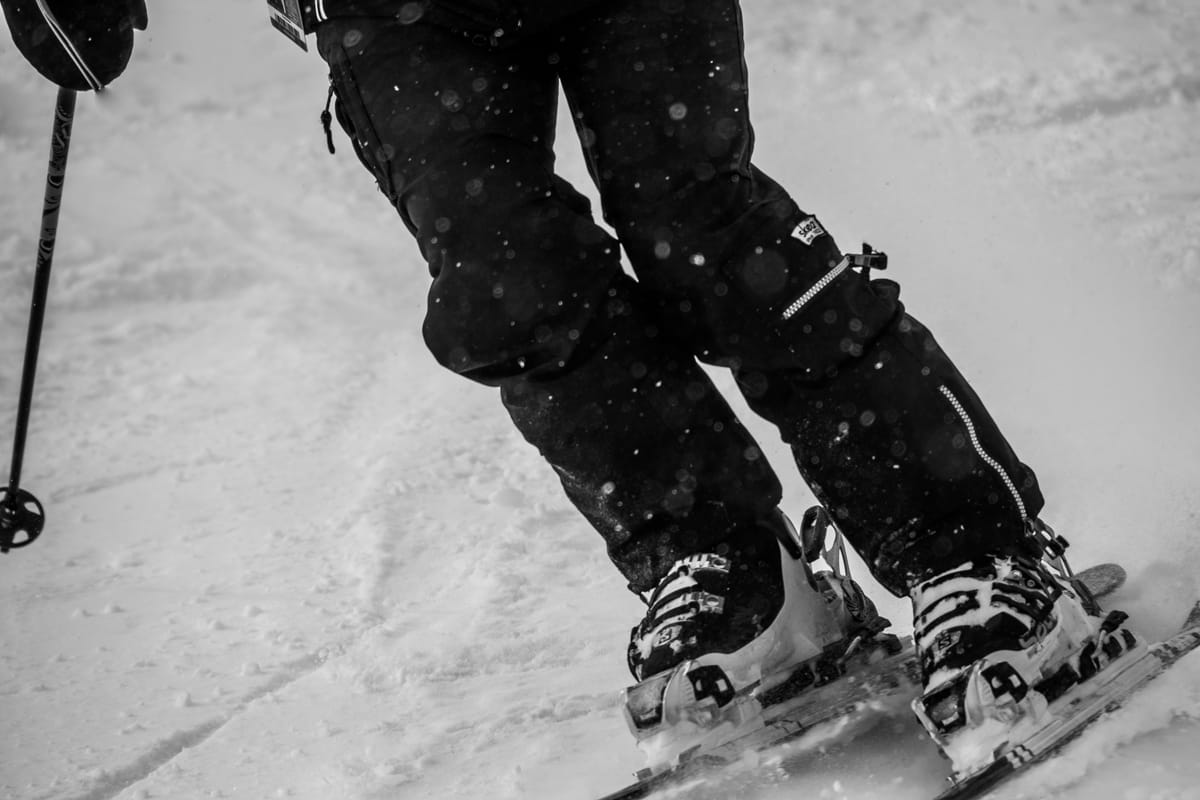
Although the return of cold weather for the winter season is often a source of dread, these low temperatures do mark an opportunity to return to the slopes for many of us. Ski season is here and unfortunately, we do treat a multitude of skiers and snowboarders each year. Here are some tips to try and avoid the need for medical treatment on or after the ski slope (especially the much-dreaded trip down the mountain in a ski patrol sled!)
Build strong legs, improve overall fitness
Snow sports require different muscles than summer activities. Spending the time to build strong quadriceps can make a big difference for improving ability and reducing the risk of knee injuries. Squats, lunges, box jumps, stair climbers are common methods used to get legs ready for the slope. Building core strength with abdominal and back exercises can help to keep you more stable on a ski slope and should be a big part of a ‘pre-hab’ program to get ready.
Check ski bindings and tune skis regularly
Getting your ski edges sharpened each year (or even more frequently) can improve stability drastically, especially on the icy conditions we can often get on the East Coast mountains. Binding pressure can change as well and having the bindings re-adjusted for boots can prevent skis from accidentally releasing or failing to release in a fall. Many tears of the anterior cruciate ligament (ACL) in the knee occur when a skier falls and the binding fails to release. Even low speed injuries can create these often surgically-treated injuries.
Wear a helmet
It has been well-established that the use of helmets in snow sports has dramatically decreased the number of skull fractures, fatalities from head injuries and scalp lacerations. Helmets are generally inexpensive ways to avoid many of the most catastrophic injuries on the slopes. Over 80% of all skiers/riders wear helmets regularly. The remaining few holdouts certainly look rather foolish and archaic in the lift lines!
Stay hydrated
These alpine activities are true ‘sports’ and are no different than other sports that generate loss of fluids which can affect the body. Dehydration can affect muscles in ways that promote muscular fatigue, injuries (pulled muscles) and decrease performance. At high-altitude mountains it can also promote symptoms of ‘altitude sickness’ which can be uncomfortable or even serious. Taking the time to hydrate (rest stops, hydration packs or bottles) is well worth the effort to improve performance and avoid injury.
Avoid pole straps
When a skier falls with the pole strap looped around the wrist, it forces the thumb into a position that can tear an important ligament. ‘Skier’s thumb’ or ‘Gamekeeper’s thumb’. These injuries can be painful and even require surgery if they are severe. By keeping the poles straps off of the wrists, the ligament injury can be avoided in most cases. Although a dropped pole in a fall can be an annoyance, it’s much preferable to an injury that could even require surgery!
Avoid the too common ‘last run of the day’ injuries
It’s a well-established ski-patrol fact that there is a significantly increased rate of injuries that occur towards the end of the day. This ‘last run’ injury phenomenon is likely the combination of poor lighting (flat light), icier ski conditions and generalized fatigue from a day of hard activity. Always keep this fact in mind at the end of the day and keep the runs less challenging and be more vigilant to stay in good control.
Alpine sports can be a fantastic way to get out and enjoy the winter but even with the best intentions, injuries can occur. A little care and training at the beginning of the season can go a long way to keep the sports safe!
Final Marathon Prep Tips
October 20,2017

Andrew L. Rosen, MD
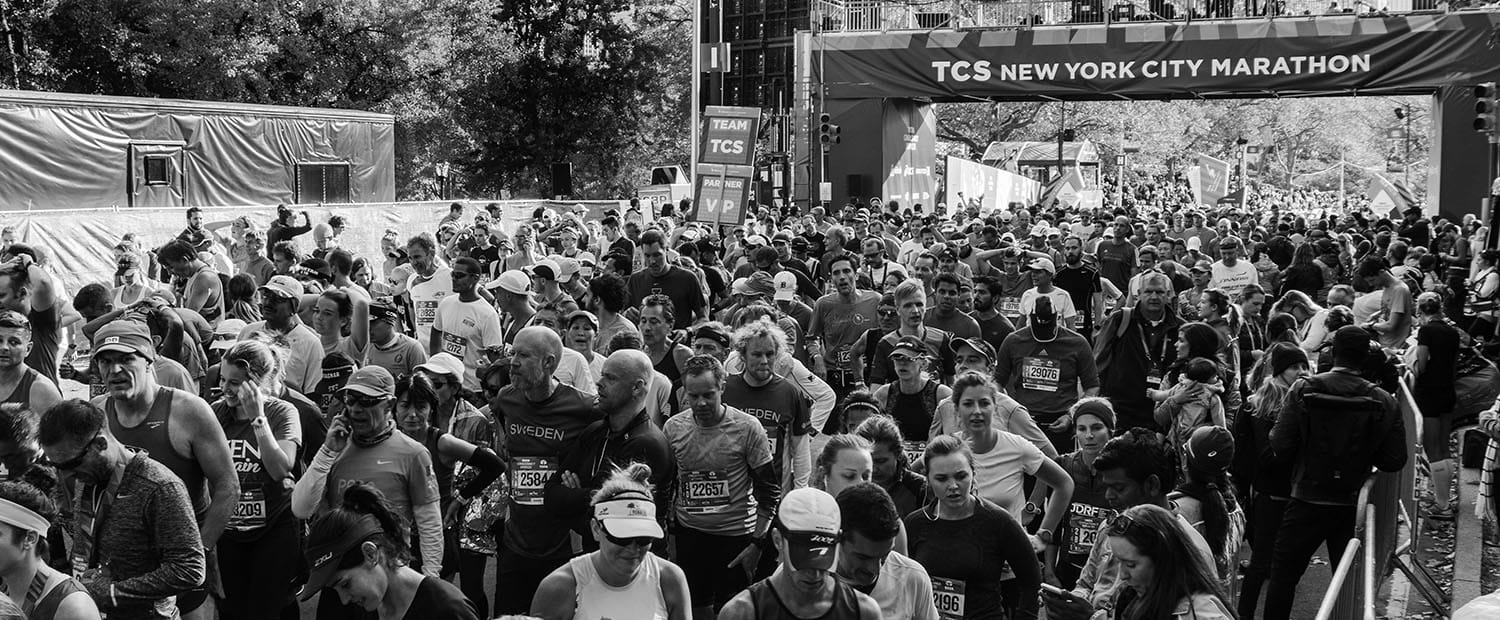
Here are some final race day tips and techniques (medical and logistical) to consider in the final weeks leading up to your marathon (NYC or other race):
Weeks before the race
• Don’t overtrain - The last few weeks are about maintaining the feel of running for your legs. You won’t improve your time in a race by pushing aggressively in the last few weeks (you can’t 'cram' for this 'test'), but you can produce an injury that won’t have time to recover.
• Get your race day ‘kit’ all together - Practice runs with all your race-day equipment. Get used to using gels, sodium/potassium supplements (for hot days), Vaseline/Body Glide in practice runs long before the big day. Wear any new parts of your race day outfit to make sure they don’t rub or chafe any areas. Buy everything in advance as stores can sell out.
• Break in your shoes - If you chose to wear new shoes or lightweight racing shoes, get some good runs in before the race to get them softened up. Use Vaseline or Body Glide liberally to avoid blisters late in training.
• Practice any sleep aid medications that you may need to use to help the night before the race (see below). Figuring out the timing of using medications before a run can eliminate risks of anything affecting performance in the race morning. Discuss any over-the-counter or prescription medications with your primary care physician if needed.
• If any body parts are consistently sore, consider getting them checked out by a physician. It’s pretty common to start feeling discomfort in different areas during the taper period and not every ache needs an urgent trip to a doctor. If there is soreness with walking or rest that can indicate a more serious problem. Hips especially are important as stress fractures can be big trouble during a race.
Day before the race
• Hydrate well – Drink lots of sports drink and water in the day before the race to get well-hydrated. Slow the drinking down at night to avoid multiple bathroom trips that will disrupt sleep.
• Make a pace chart or band – If you are pushing for a specific goal, having some projected times to reach mile markers can be helpful to keep you motivated. Doing complex math calculations at mile 22 can be quite a challenge and some times written in advance are always a good idea.
• Make a plan to see friends and family on the course – Picking specific mile intervals and sides of the course is a good idea to avoid worrying about missing someone you want to see. If you want to pick up gels or other nutrition, don’t make these spots ‘mission-critical’ since sometimes plans will go awry. Don't forget to plan to run the tangents of the course. Plan meeting spots that don't make you switch from one side to the other or run on the long side of a turn (adding distance to your already long-enough event).
• Get a good night sleep – Go to bed early and realize that sleep can be pretty tough when anxious and excited about a race. A little ‘irrational fear’ is natural, even for experienced marathoners. Jet lag from time zone changes for a destination race can affect sleep as well. A sleep aid medication can be helpful if it has been practiced before.
Race morning
• Wear layers of disposable clothing – Many races will involve long periods of sitting or standing around before the race begins. This is an excellent time to go through your closet to pull out old sweaters, sweatpants, race t-shirts that can be worn in layers to stay warm. Large, hooded ponchos and garbage bags for feet are ‘mission-critical’ if rain is possible in the forecast. Being cold before the race will only waste valuable energy that you will need to run 26.2. Most races donate the discarded clothing to charity groups afterwards so it’s good to clean out the closet. Remove most of the extra layers in the final start corral a few minutes before the race begins. For cold days, a thin long-sleeve extra t-shirt, hat and gloves should be kept on for the first few miles with plans to discard them on the course as you go. It’s best to never wear any extra layers or gear that you value, as it might push you not to discard them when you are hot from running.
• Bring impermeable something to sit on – Starting the race with wet shorts is not a great way to go. Dew, rain, Gatorade or unmentionable bodily fluids are quite abundant in the waiting areas and corrals. Trash bags and newspapers make a great way to sit safely.
• Manage the bathrooms carefully – Drink some sports fluids early in the morning but stop drinking several hours before the race. Go to the ever-so-inviting porta-potties early on arrival in case there are long lines. It can be tough to use the bathrooms again right before the start so try and stay ahead of the crowds. It is common to see some creative runners using bushes and bottles just before the start but it’s better to try not to overhydrate in the morning.
Handy tips: • If you see wide-mouth yellow Gatorade bottles being passed or rolled in the starting corral, they may not contain a sports fluid. • If your starting course is on the lower level of the Verrazano bridge, run in the center to avoid the wind-blown effects of upper level runners urinating over the sides of the bridge.
• Avoid checking a bag if possible – Although it is nice to have a change of clothes and a cellphone when you finish a marathon, getting to that bag can be sometimes difficult and time-consuming. The ‘walk-off’ from a race is designed to be a long process to keep runners moving and avoid cramps and passing out. Stopping to change clothes too quickly after a race can lead to difficulties moving again and can be avoided by meeting someone outside of the race area when it will be easier to change. The added stress of worrying that a cell-phone or other valuable items will be lost in the baggage process is nice to avoid as well. There are always lots of people at the finish that will gladly lend their cell phones to contact your friends or family if you can’t find them at the meeting area.
• Vaseline everything! – Liberally apply to nipples, groin, thighs, inner arms, waist circumferentially, feet (soles, toes, socks). Bring a jar or bag to the starting corral to apply right before the race begins. Too much Vaseline could lead to discomfort that lasts for a few minutes of running (no problem). Too little can result in pain and bleeding (hours of torture).
During the race
• Hydrate carefully – Base your fluid intake on the weather. Taking a single fluid cup every mile may be perfectly fine for cool weather but hot conditions will likely demand multiple cups at every mile. For races with long periods between water stops, get cups at the start of the tables and cups ‘to go’ to carry for a bit after the stop. Hydrate early in the race, long before feeling thirsty. Alternating cups of Gatorade and water is very important to avoid trouble with sodium imbalances.
• Take in carbohydrates early, evenly and regularly – PowerGels, Gu’s, etc... are important to keep up with during the run to maintain energy. This should have been practiced regularly with long training runs before. The amount may vary per person based on size. Basic plan: Intake just before race start, at mile 5, and 5 mile intervals to around mile 23.
• Use the medical tents for issues that arise (not just major ones) – These tents in every race are designed to help you keep running safely and efficiently. Getting Vaseline for a chafing area or a blister can be a lifesafer for a problem. Volunteers supply salt packs and fluids if you are feeling dehydrated and can help massage out a cramp if one occurs. Many runners think the tents are only designed for life-threatening injuries but the health care team is really designed to help runners complete the race, not pull them out.
After the race
• Walk it off! – Keep walking once the race is done. Enjoy the true ‘runner’s high’ of finishing an amazing accomplishment but don’t stop and bend over. Even the professionals that win the races are pushed to keep moving and ‘take a victory lap’. When the muscles of the legs stop contracting after the finish line, blood pools in the legs and blood pressure drops quickly. This can lead quickly to passing out but can be avoided by keeping the muscles moving right afterwards.
• Hydrate more – Some dehydration is normal for any long run. Make up the lost fluids afterwards, even if the taste of Gatorade brings back tough memories
Work your way out of knee pain (don’t just brace it!)
July 12,2017

Andrew L. Rosen, MD
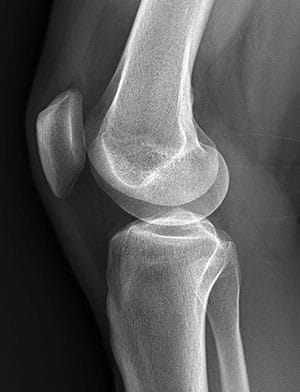
If you line up at any running race you will see many runners wearing all manners of contraptions on their knees. Braces, straps, taping seem to be part of the standard wardrobe at these events. Although such devices do play a part in addressing runner’s knee problems, many people have never tried to fix the problem that has forced them to need help in the first place.
The vast majority of runners with knee problems have one or both of two basic running disorders. Patellofemoral knee pain (Runner’s knee) and iliotibial band syndrome. These problems are often combined and usually represent muscular issues that are at the root of the problem. I tell patients often that running doesn’t usually cause problems with trauma to the body, but simply amplifies pre-existing muscular imbalances that create pain in a leg when the repetitive forces of running are applied on a regular basis. Although some knee problems are structural (cartilage tears, arthritis, stress fractures), most basic knee pain is muscular in nature.
The two main muscular imbalances that can affect a runner are usually weakness of the inner portion of the quadriceps (the VMO) and tightness of the iliotibial band (outside of the thigh). Simply addressing these two issues can usually correct the patellar (kneecap) maltracking which occurs and improve the symptoms. The act of running is an inherently hamstring (back of the leg) muscular activity and often does not lead to strong, well-balanced quadriceps muscles with increased training. Although runners of course will have strong legs compared to a group that doesn’t run at all, the muscular development is often not well-balanced.
A simple program of inner quadriceps strengthening and IT band stretching is usually very effective in curing the symptoms and allowing a runner to perform pain-free. These exercises can often be learned through basic internet research. For a more comprehensive approach, a formal physical therapy consultation can be an excellent way to start. A good foam roller can be a powerful tool that should be a part of most runners equipment inventory.
Many runners find that the key to running without pain is all the work that is done outside of running. Developing a workout program that builds strong, well-balanced knees can be critical to keeping knees healthy with long-distance training.
Although braces can be helpful in decreasing symptoms and are sometimes helpful in keeping a runner going, they are rarely the first (or only) treatment that is recommended. Knee mechanics are usually better improved 'internally' with stretching and strengthening that will keep the knees running strong for years to come.
Runners should take a revised look at spin classes
May 10,2017

Andrew L. Rosen, MD
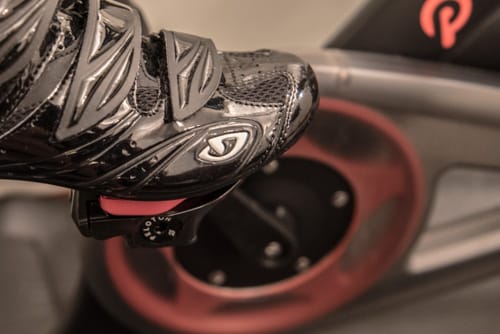
As a runner myself, I’ve tried numerous forms of alternative workouts without much success. I’ve never been able to be excited by indoor gym workouts such as elliptical, rowing or simple stationary biking. Outdoor biking can be a great alternative as a runner accustomed to being outside but the workouts are much more time consuming, require costly equipment and have increased risk of injury, sometimes serious.
I had tried spin classes many years ago and found them equally unappealing with teachers emphasizing simple hill climbing and loud music. Recently that seems to be changing dramatically. Modern spin classes can be much more attractive to runners with new stationary bicycles that provide constant information ‘metrics’ of speed and resistance that feel very similar to the information we are accustomed to seeing on our GPS watches as we train and race outdoors. This non-stop information drastically changes the stationary biking experience and allows riders to know how hard they are pushing and how much work they accomplished in the workout.
The addition of this information also allows classes that feel very similar to running speedwork with high intensity short intervals, longer tempo intervals and repetitive activities that mimic running ’fartlek’ workouts. New spin studios such as Peloton and Flywheel take it a step further and create a ‘leaderboard’ that shows riders where they are placing in a workout and allow every ‘ride’ to be a race that allows participants to virtually chase each other and push a hard workout.
Having an indoor activity can also substitute for a running workout for days of rain, snow or heat that would make running undesirable or unsafe. The Peloton company makes the workout even easier by allowing the same enhanced workout experience without leaving your home.
I know it is seems unusual for a running doctor to tell runners to try something different, but adding stationary biking to a weekly workout program allows runners to improve their overall conditioning with stress to different muscle groups than running.
Getting experience with a good cross training workout can also be valuable when an injury forces time off from running. Many of us force ourselves to run through injuries because we don’t have another workout activity to easily transition to. Many injuries will resolve quickly with a short period of relative rest but will worsen if the running continues.
Trying out the new generation of spin classes may help many runners to keep motivated, continue running stronger, and avoid injuries.
Take hip pain seriously
April 15,2017

Andrew L. Rosen, MD
Many runners will experience some discomfort in their hips if they push their mileage and intensity during training. Most pain in the legs for runners is muscular in nature and is often the result of weakness and tightness of the supporting muscles. Classified as ‘tendonitis’, these conditions will often improve with simple treatments such as rest, anti-inflammatories, stretching and strengthening. Unfortunately, not all pain in runners is benign in nature. The excess forces on the bones of the legs in runners can create stress fractures in any part of the leg, from the pelvis to the foot. Most stress fractures of the legs are painful but also benign and heal uneventfully with a period of rest.
The hip is a unique joint
The hip is a special area because of the angle of the hip bone (femur) that receives substantially increased force with weight bearing compared to any other part of the leg. This bone has a potential to fully break (fracture) which can be catastrophic. A full fracture of the hip requires surgical treatment with insertion of large metal screws. The long-term consequence of these fractures can be even worse with bone necrosis which could even require a hip replacement.
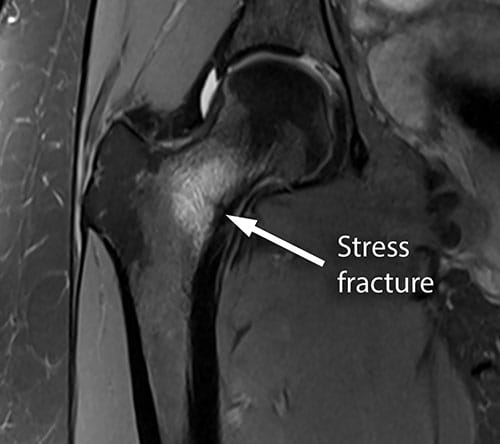
How to diagnosis a stress fracture
Because of the unique severity of stress fractures of the hip, sports medicine doctors are often much more aggressive with diagnosing hip conditions with an MRI scan which is usually able to determine if a fracture is present. The MRI also gives us information on how severe the fracture is and helps estimate the risk of complete fracture.
Signs of a possible stress fracture of the hip
• Pain located in the groin or front of the top thigh area
• Pain with contact of the leg on the ground
• Pain that worsens during a run
Should a runner get their hip checked?
The hip is one area that demands medical attention for pain that does not improve quickly. Not every ache in the hip requires an immediate trip to the orthopaedic surgeon, however pain that doesn’t improve with basic rest should be considered carefully.
It is especially important to be certain that a stress fracture isn’t present if soreness in the hip is present prior to a long race. Every year, marathon medical services are called to assist a runner who falls down when a full fracture occurs during a race. This is an avoidable catastrophe that informed runners should all be able to avoid.
Spring is a great time for running injuries (unfortunately)
March 18,2017

Andrew L. Rosen, MD
As the winter fades, many of us see the warmer days and longer daylight hours as a driving force to get back in shape. Although many of us still enjoy running in cold conditions year-round, it’s very hard not to get excited by the chance to start shedding layers and run outside.
Unfortunately, spring is also a very common time for running injuries to occur. Increased weakly mileage, increasing speed and frequency of runs can be a recipe for trouble if the legs are not ready for it. Many of us sign up for spring races many months in advance, putting pressure on ourselves to get back into shape to perform. Even without a specific race goal driving our training, it is important to plan a spring running program carefully.
Avoiding injuries
The most important way to stay out of the orthopaedic surgeon’s office is to carefully control a training program. Time spent making a careful plan of increasing workouts can be very effective in allowing a runner’s legs to acclimate and stay below the threshold for injuries. Key components include:
• Slow increases in weekly mileage
• Avoiding frequent back-to-back daily runs initially, allow for recovery time. Cross-train on recovery days to vary the forces across the legs.
• Working in speed and hill intervals slowly. Don’t try and hit the same high-intensity splits you did in the fall when in peak shape
Other tips
• Replace worn out shoes with new ones to decrease stress across the legs
• Make sure the rest of the body is strong – core and quadriceps strengthening exercises are vital to reduce stress and maintain balance during running.
• Don’t forget to stretch – hamstrings and calves especially need to be loosened up before and after runs. Simple stretches or devices like foam rollers should not be neglected as a runner increases activities.